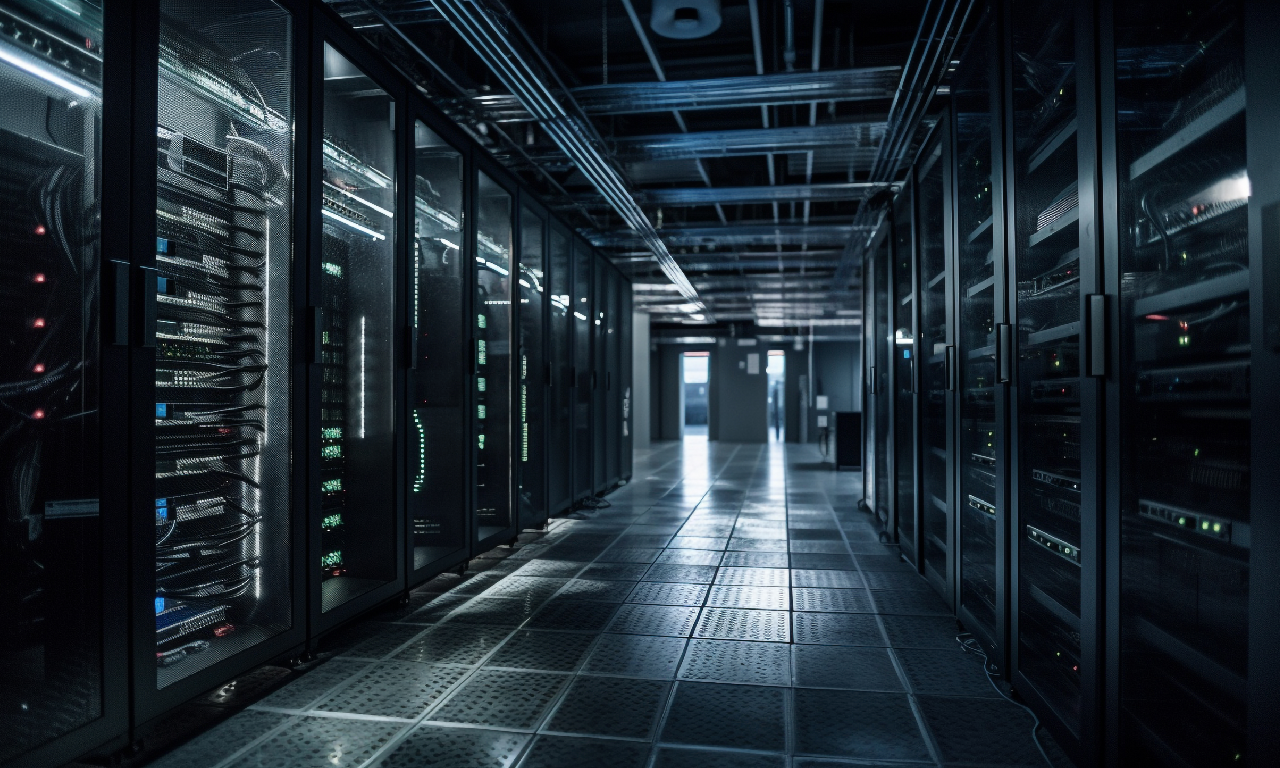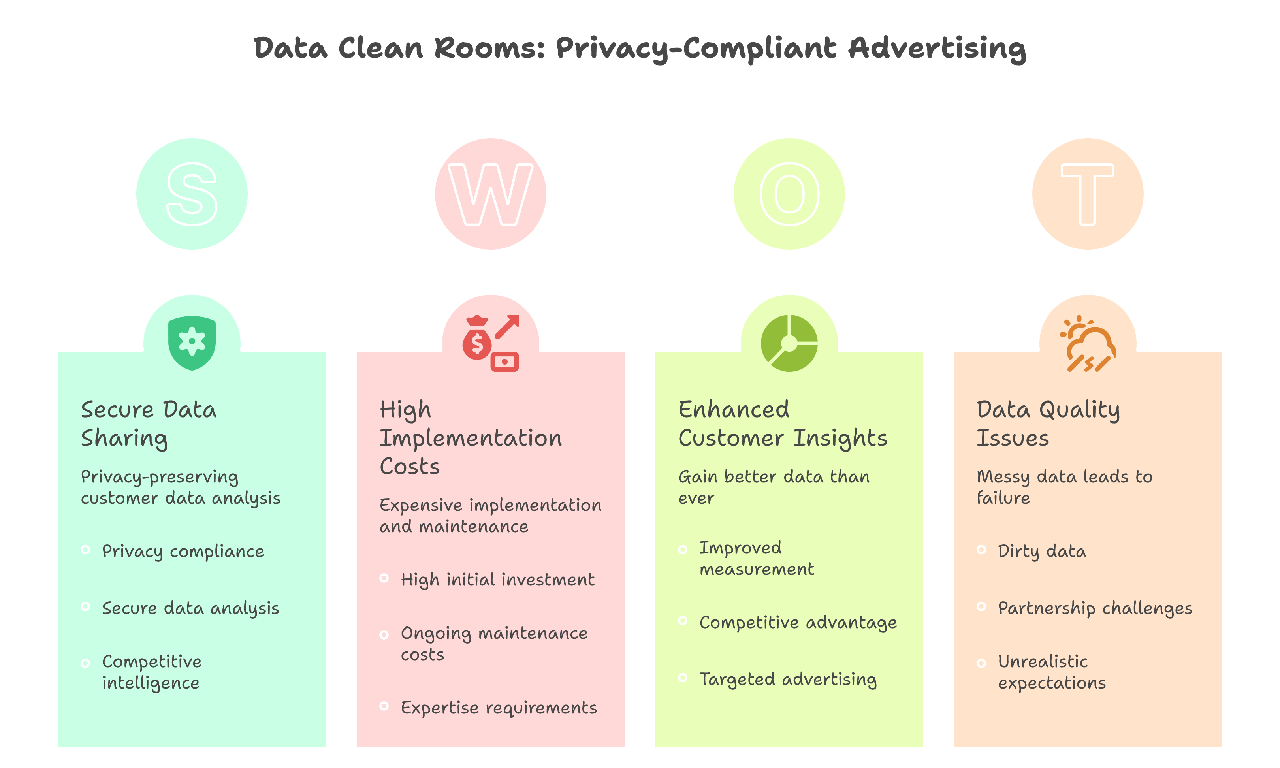How Data Clean Rooms Let Competitors Share Customer Data (Without Breaking Privacy Laws)

Flipkart knows exactly which Amazon Prime members would switch for the right Big Billion Days offer. Swiggy can identify Zomato loyalists worth poaching. HDFC Bank measures which Instagram ads actually drive credit card applications and not just clicks.
They're not hacking each other's databases. They're using data clean rooms.
Think of a data clean room as Switzerland for your customer data. Neutral territory where fierce competitors can collaborate on advertising insights without exposing their secret sauce. It's where Hindustan Unilever and DMart can finally figure out if those IPL ads actually drove in-store sales, all while keeping their customer lists locked away.
The timing couldn't be more critical. Google Chrome, which commands almost 90% of India's browser market was recently planning to kill third-party cookies (the plan is on hold as of now). Apple's privacy changes already block tracking for 340 million Indian iOS users. Meanwhile, the DPDP Act 2023 threatens penalties up to ₹250 crore for data violations.
Yet here's the plot twist. While everyone's panicking about privacy, smart advertisers are getting better data than ever before. They're measuring actual purchases, not just clicks. They're finding customers their competitors missed. And they're doing it completely legally.
This guide breaks down exactly how data clean rooms work, what they really cost (spoiler: budget ₹1 crore), and why 90% of Indian advertisers are still using them wrong.
What is a data clean room?
Imagine you and your biggest competitor both want to know if the same customers shop at both your stores. But sharing customer lists? That's corporate suicide.
That is where data clean rooms come into the picture! A secure digital space where both companies can analyse combined data without actually seeing each other's raw information.
Here's how it works in practice: Let’s say Reliance Retail uploads their JioMart customer data- encrypted and hashed. Procter & Gamble uploads their direct-to-consumer buyer data - same encryption.
The data clean room matches customers using anonymous identifiers, then reveals only aggregated insights: "47% of Tide buyers on P&G's website also shop at JioMart."
Neither company sees individual names, emails, or purchase histories.
But why are Indian advertisers suddenly obsessed with data clean rooms?
Three reasons are driving adoption.
1. Measurement is broken. That Facebook campaign showing 10,000 conversions? Your sales data shows 6,000. Where's the truth?
2. Privacy laws have teeth now. The DPDP Act means one wrong move with customer data costs you ₹250 crore.
3. Competitive intelligence is gold. Knowing your Amazon ads reach 30% of Flipkart's customers changes everything - leverage marketing intelligence.
Data clean room platforms let you build custom audiences based on combined insights and nurture high-value segments effectively. Target "people who bought smartphones from competitors but not from you." Exclude "customers already subscribed to your premium service."
All without touching personally identifiable information.
How data clean rooms actually work?

Let's strip away the marketing fluff and see what actually happens inside a data clean room.
Step 1: Data preparation
Both parties clean their first-party data by removing duplicates, standardising formats, and hashing emails and phone numbers. This isn't simple work, but skip it and everything fails.
Most companies underestimate this phase, which typically takes 4 to 8 weeks.
Step 2: Secure upload
Each company uploads their encrypted data to the clean room environment. Think of it like sending packages to a neutral warehouse where only robots can see inside.
AWS Clean Rooms charges approximately $2 per CRPU-hour (Clean Rooms Processing Unit), with most queries using 32 CRPUs and completing in 3-5 minutes.
Step 3: Privacy-preserving matching
This is where things change. Using techniques like private set intersection, the data clean room identifies overlapping customers without revealing who they are.
Match rates typically range from 20% to 40% depending on data quality and customer overlap.
Step 4: Aggregated analysis
You run queries, but results only show groups, never individuals. Minimum aggregation thresholds (typically 50 users) prevent identifying specific people.
"Show me conversion rates for Delhi users aged 25-34" works.
"Show me what Raj Kumar bought" doesn't.
Step 5: Actionable insights
Export aggregated segments for activation. Create lookalike audiences and optimise bid strategies. You should also measure incremental lift and combine with predictive lead scoring.
IKEA and Austrian retailer Willhaben used this approach to reduce cost per visit by 30% without using cookies.
The technical safeguards make this privacy-compliant: differential privacy adds statistical noise, secure multi-party computation ensures no raw data exposure, and audit logs track every query. It's bulletproof when done right.
Automate lead generation and scoring with ease using OttoPilot
5 major data clean room platforms compared
Picking a data clean room platform is like choosing between premium credit cards. They all promise exclusive benefits, but the real costs and perks vary wildly.
Here's what each platform actually delivers, based on 2025 pricing and capabilities.
| Platform | Best For | Setup Cost | Monthly Cost | Time to Deploy | Key Strength |
|---|---|---|---|---|---|
| Google Ads Data Hub | Google-heavy advertisers | Free (but really ₹25 lakh in services) | ₹2.5-8 lakh | 8-12 weeks | YouTube + Search integration |
| AWS Clean Rooms | Multi-cloud enterprises | ₹40 lakh | ₹4-12 lakh | 4-6 weeks | Cross-cloud collaboration |
| Snowflake | Existing Snowflake users | ₹60 lakh | ₹6.5-16 lakh | 6-8 weeks | Pre-built advertising templates |
| LiveRamp | Complex partnerships | ₹83 lakh+ | ₹8.3 lakh+ | 12-16 weeks | 1,000+ partner network |
| InfoSum | Privacy-first brands | ₹50 lakh | ₹4 lakh+ | 8-10 weeks | Data never moves |
The hidden costs nobody mentions? Every platform needs additional cloud infrastructure (add 30% to your budget), professional services for setup (another ₹20-40 lakh), and ongoing maintenance.
Implementation reality check for data clean rooms
Let's burst the vendor bubble with actual implementation data from Indian companies in 2024-25.
- The money nobody wants to discuss
Total year-one investment ranges from ₹1.5 crore to ₹4 crore. That's not just platform fees. It's cloud costs, consulting, training, and the inevitable scope creep. Data standardisation can take four months, instead of four weeks.
- Timeline versus reality
Vendors promise production-ready in 8-12 weeks. The truth? Six months for basic measurement, 12 months for full activation capabilities.
- The team requirements vendors downplay
You need a data engineer comfortable with cloud architecture, a privacy specialist who understands both law and technology, marketing analysts fluent in SQL, and a project manager with infinite patience. Most companies dedicate 4-8 people for the first year. That's ₹60 lakh to ₹1.2 crore in salary costs alone.
According to IAB's State of Data 2023 report[1], 62% of companies globally spent over $200,000 (₹1.65 crore) just on the technology. Another 49% needed six or more dedicated employees. And 30% took up to two years to see meaningful results.
5 common pitfalls killing data clean room projects
The road to data clean room success is littered with failed projects and blown budgets. Here's what trips up even the smartest companies, and more importantly, how to avoid joining them.
1. Walking in with dirty data
Imagine building a luxury hotel on quicksand. That's what implementing clean rooms with messy data looks like.
Data standardisation takes 4-8 weeks on average, yet most companies budget just 1-2 weeks.
Fix your customer database first. Remove duplicates, standardise formats, and validate emails. Data cleaning isn't optional. It's survival.
2. The real-time fantasy
Clean rooms process data in batches, typically daily. That killer campaign you launched at 9 AM? You'll see insights tomorrow, maybe day after.
AWS Clean Rooms, for instance, processes queries in 3-5 minutes but runs on scheduled intervals, not real-time streams. Adjust your expectations accordingly.
3. Partnership paralysis
The technology works, but getting partners onboard can be difficult. Legal reviews take months, and data teams resist sharing. Moreover, compliance officers can panic easily.
According to Forrester's Q4 2024 report[2], vendor-use case misalignment is cited as a top buyer challenge. The actual technical integration might take three weeks, but partner negotiations often stretch to 6-9 months.
4. Match rate reality check
Vendors tout fancy matching capabilities. Reality? You'll match 20-40% of records on a good day. Different customer bases? Drop that to 15%.
IKEA and Willhaben achieved great results, but even they worked with typical match rates in this range. Still valuable for insights, but hardly the goldmine many expect.
5. Underestimating expertise needs
More than half of the companies need six or more employees dedicated to clean room technology. You need SQL proficiency, understanding of privacy-enhancing technologies, and experience with cloud platforms. Without proper expertise, you'll burn money on unused features.
GrowthJockey's approach to data clean rooms
We've watched too many companies blow crores on data clean room implementations that never deliver value. That's why GrowthJockey takes a different path.
- First, we start with your data reality. Our Intellsys.ai platform handles the unglamorous but critical data preparation phase. We clean, standardise, and validate your first-party data before you spend a single rupee on clean room platforms. This alone cuts implementation time by 40%.
- Second, we focus on one use case that matters. Not transformation. Not revolution. Just one clear win. Maybe it's measuring your Diwali campaign's real impact. Perhaps it's understanding customer overlap with your biggest competitor. Start small, prove value, then expand.
- Third, we bring the expertise gap. Our team includes data engineers who've implemented clean rooms for Fortune 500 companies, privacy specialists who understand both DPDP Act requirements and technical architecture. Moreover, we have marketing analysts who translate SQL queries into business insights.
We've helped companies deploy functional clean rooms in 12 weeks, not 12 months. Our pre-built connectors for Indian platforms like Flipkart, Paytm, and JioAds eliminate integration headaches. Most importantly, we ensure you're measuring what matters for your business.
Conclusion: Your Data Clean Room Decision Framework
Data clean rooms aren't just another martech trend you can ignore. They're becoming as essential as having a website. The question isn't whether you'll need one, but when and how you'll implement it.
Here's your reality check. If you're spending over ₹5 crore annually on digital advertising, you're already losing money without a clean room. Those wasted impressions, duplicate targeting, and attribution gaps are eating 20-30% of your budget. The math is simple. Invest ₹1.5 crore to save ₹1 crore annually.
Ready to explore if data clean rooms make sense for your business? Or still figuring out if your data's ready for prime time? Either way, the conversation starts with understanding your current data maturity and advertising challenges.
The privacy-first future of advertising is here. The question is, are you ready for it?
Contact our experts at GrowthJockey and see how our team and Intellsys.ai can change the growth curve of your business.
FAQs about data clean rooms
What's the actual cost of implementing a data clean room in India?
Budget ₹1.5 crore to ₹4 crore for year one, including platform fees, cloud infrastructure, consulting, and training.
According to IAB's 2023 report, 62% of global companies spent over $200,000 (₹1.65 crore) on the technology alone. Ongoing annual costs typically run ₹50 lakh to ₹1 crore.
Remember to factor in hidden costs like data preparation (₹20-40 lakh) and staff training (₹10-15 lakh).
How do data clean rooms comply with India's DPDP Act 2023?
Data clean rooms align with DPDP Act requirements through multiple safeguards. They use encryption and hashing to protect personal data, implement minimum aggregation thresholds (typically 50 users) to prevent individual identification, and maintain audit logs for compliance tracking.
Differential privacy adds statistical noise to results, ensuring individual privacy. Most importantly, raw personal data never leaves your control, addressing the Act's data localisation and consent requirements.
Can mid-sized companies afford data clean rooms?
Currently challenging but not impossible. If you're spending under ₹5 crore annually on digital advertising, the ROI might not justify the investment. However, managed solutions and agency partnerships are emerging.
Google Ads Data Hub offers a lower entry point for Google advertisers. Some companies start with privacy-preserving APIs or partner with agencies that have clean room access. The technology should become more accessible by 2026 as standardisation improves and costs decrease.








